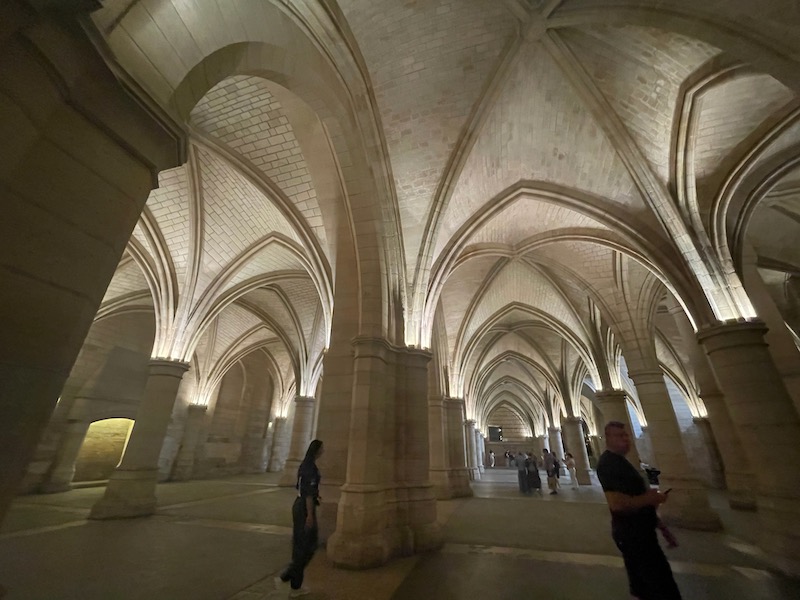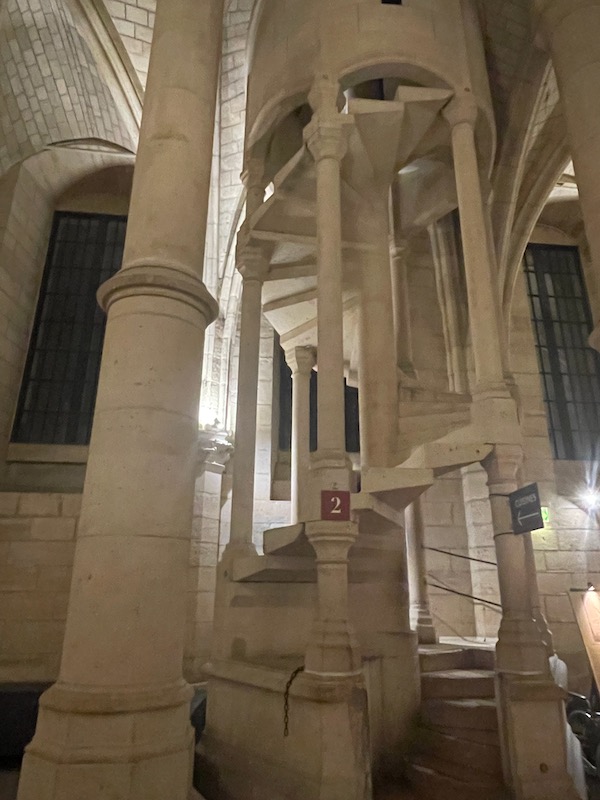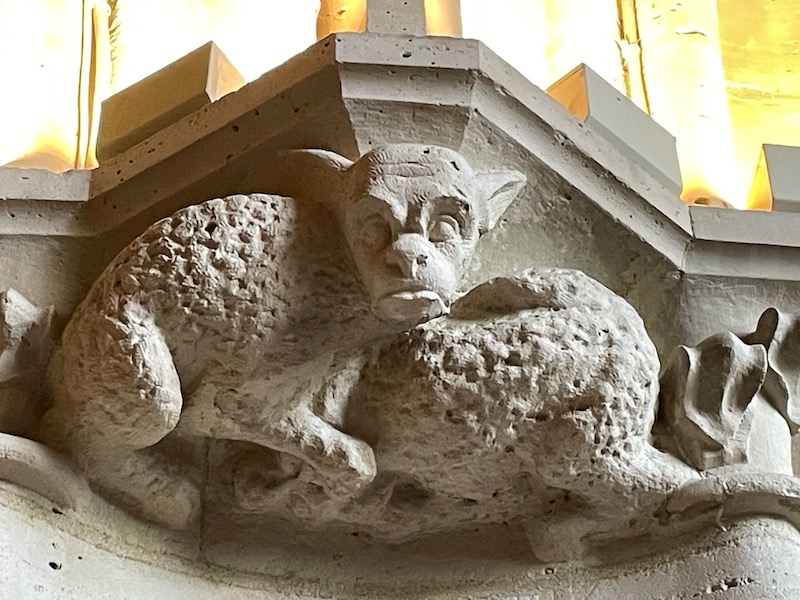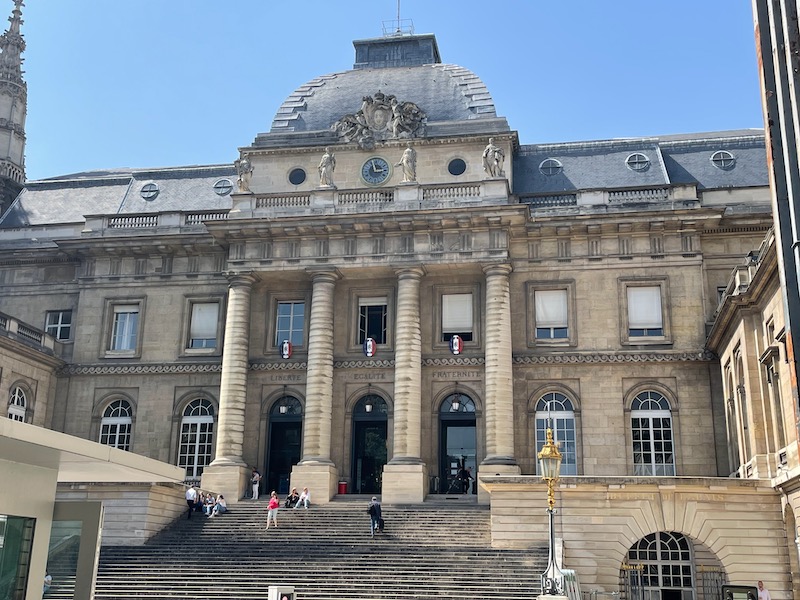Our Blog - Paris Weekend - May 2025 - Conciergerie
I don't remember actually every going through the Conciergerie, although I have to believe we did back when we lived in Paris. But we decided that we would go through it today, since we had a bit of time. If you happened to watch the 2024 Summer Olympics opening ceremony, you may remember the metal band Gojira playing from the windows while referencing the beheading of Marie Antoinette and the Reign of Terror (which some people thought was in fairly poor taste).
In the 1st – 3rd centuries, the Île de la Cité was part of the Gallo-Roman city here. The island was surrounded by a wall and a fortress of the Roman governor was built on the western end of the island. The Merovingian king Clovis later established his capital on the site of this Roman fortress. The Carolingian monarchs moved their capital out of the city, but by the end of the 10th century, under Hugh Capet, Paris had become the capital of the Frankish kingdom. He had a large new fortified residence, the Palais de la Cité, built on the same site.
The Conciergerie was originally part of this royal palace but was later used as a courthouse and prison. Two large medieval halls remain from the royal palace, called the Palais de la Cité, as well as Sainte-Chapelle (the very decorated chapel for the palace). During the French Revolution (specifically during The Terror) it was used as a prison, housing almost 2800 prisoners, including Marie Antoinette. They were incarcerated, tried, and sentenced here and, if found guilty, many were carted off to various sites for execution by guillotine.
Here is a view of the North facade, sitting on the banks of the Seine. You can see the 4 medieval towers on this façade (one square on the far side, two round next to each other a bit to the right, and then another round one around the middle).

They have a "history" tablet that you can use to scan various stands on the tour and it gives additional information, mostly around the time of its use as a royal palace, including recreations of what it would have looked like during a banquet, as an example. A nice added touch which I am sure wasn't available if we had gone through the building back when we lived here.
The Salle des Gens d'Armes (Hall of Men-at-Arms) was built in the early 14th century by Philip IV on the ground floor. As hopefully you can see from the pictures, it is really a huge room .. 200 feet long by 92 feet wide and 29 feet tall in the vaults ... making it the largest non-religious Gothic hall in Europe. Between 1000 and 2000 servants and soldiers attached to the palace would eat their meals here. During the reign of Philip IV, parts of the hall were used for meetings and the smaller rooms would be separated by partitions or tapestries during meetings.


The Great Hall was located directly above this room and was connected to the upper hall by spiral staircases like this one, the only one still in place. Unfortunately, the Grand Hall is not part of the tour. You reach the kitchen through this staircase. The kitchen pavilion was added around 1353, and stuck on the outside wall of the palace. This was very typical in the Middle Ages to avoid risks of fire spreading to the palace. This also allowed the provisions of the kitchen to be unloaded from a boat on the Seine directly into the kitchen. There are 2 large fireplaces that were used to prepare the food, and Tom is standing in one of them to give you a sense of how big they were!


I thought these were really cute sculptural decorations in the Guard Room, dating back to the 19th century.

There is LOTS of information about the Terror of the French Revolution, the trials, and the executions. There are various rooms that show what the cells would have been like, and rooms that were used for administrative functions (registration, cutting of their hair). These have been recreated because almost all of the original cells were demolished during remodeling in the 19th and 20th centuries. The Hall of Names has walls covered with the names of over 4,000 people who were tried and sentenced to death by the Revolutionary Tribunal here. Between the spring of 1793 and 1794, almost half of the prisoners tried by the Tribunal were acquitted and were set free. But this number dropped to only 20% during the period of "the Terror", and those found guilty included Marie Antoinette (the most famous, of course) but also Danton and Robespierre (the main leaders of the French Revolution, when they seemed to be getting too powerful).
The Prisoner's Chapel was rebuilt in 1776 after a fire. It has remained pretty much the same since the time of the Revolution. The black curtains behind the altar cover the entrance to and area dedicated to Marie Antoinette, and this was supposedly where her cell was.

And now outside ... this is today the Palais de Justice which houses the Court of Appeal of Paris. You can see the grand staircase and the small gateway on the right. This gateway is where prisoners would be taken to get registered when they were brought here for their trials. If found guilty, they would be put into a cart at the bottom of the stairs and taken almost directly to their execution ... guess there was no Court of Appeals at that time!

